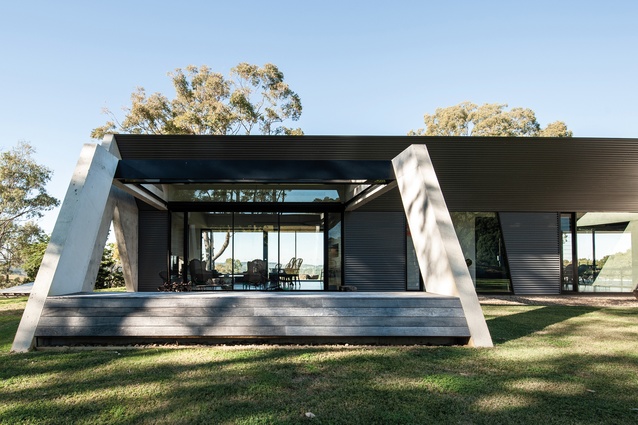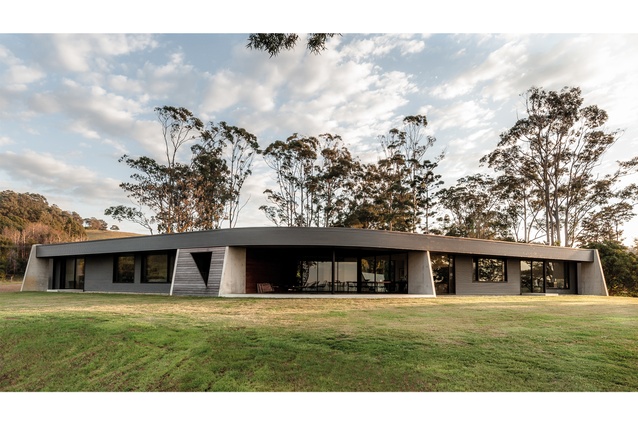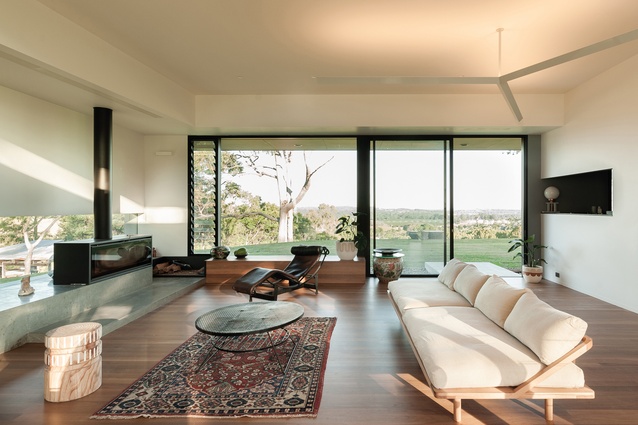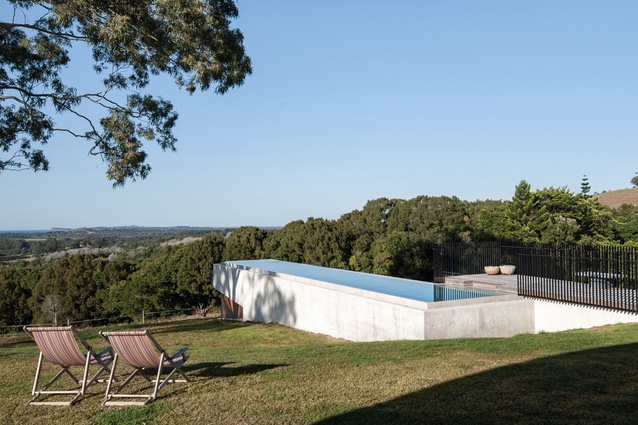Hot House: Great Granny House
A language of movement is expressed in this Great Granny House: as if shaped by the wind, the sun and the ways in which it is used and moved through.
Great Granny House is the home of a retired couple that moved from Melbourne to the hinterland behind Lennox Head on the northern New South Wales coast to enjoy a more tranquil life. The clients engaged Peter Carmichael of Cocks Carmichael Architects to design their house.
It was Peter’s ninth project for them over 30 years, and his final project as Cocks Carmichael closed its doors after nearly 50 years in practice. Local Byron Bay studio Harley Graham Architects collaborated with Peter to deliver the two-bedroomed house. The site was flattened and a separate pool, guest house and garage were built around the property.
“The structures locate and define a residential precinct within an expansive rural environ,” Peter explains.
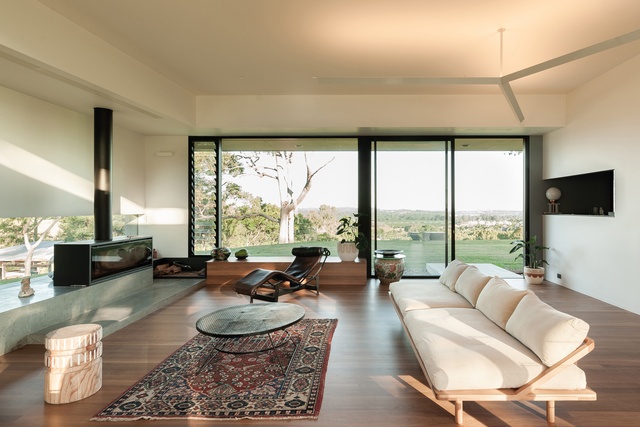
The clients wanted a low-maintenance house with a sense of permanence and the starting point of the design was a “simple corrugated-iron shed”. While the realised house is more than a shed, its materials and form retain that unpretentious simplicity. Corrugated steel acknowledges the regional vernacular, recycled timber respects the natural setting and off-form concrete creates the desired sense of solidity.
A band of cladding sweeping around the rear accentuates its low-slung form, and concrete walls bookend the house and define the outdoor spaces with bold, angular forms. The roof subtly pitches upwards to the front, and a steep, raking soffit provides sun control and helps ameliorate buffeting wind.
The house is accessed via a manicured lawn, which contrasts with the wild sprawling hills on the other side. The point of entry is located in the middle of the house where the two wings meet, as if the V formation suggests the direction of movement, and a concrete canopy shelters the front door.
The house is only one room wide to capture views, northern sun and cross-ventilation. A narrow threshold beyond the entrance opens to a large verandah in the undercroft of the house, protected from southerly weather. The dining, kitchen and living area extends to the east, with a concrete pergola and deck providing outdoor space to the north to take advantage of winter sun.
The bedrooms and bathrooms are to the west, and triangular windows and angled door openings in the passageway suggest forward motion. The windows also allow views of the clients’ art collection from outside the house and create plays of light and shadows that enliven the passageway walls.
The infinity pool sits behind the house where it extends over the slope of the land. Pointing to the coast, it invites movement towards the water, to both the pool and the ocean. Indeed, this language of movement expressed in the architecture of Great Granny House is shaped by the wind, the sun and the ways in which it is used and moved through.
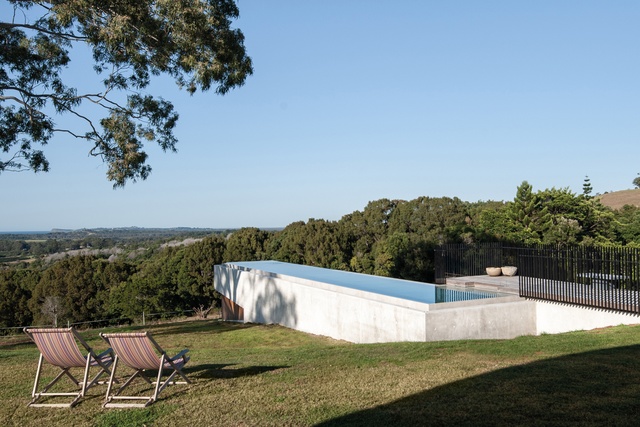
Geometry gives order to architecture. Rectilinear forms are static; curves and angles are dynamic. Freed from the constraints of rectilinearity, Great Granny House speaks of expressed movement with curved and angled geometries shaped by natural forces and inviting forward motion.
Great Granny House evokes this sense of kineticism through a design that directly responds to the characteristics of the elevated, open site. From the coast, its rounded form softly arcs into a wide V formation, as if swept back by the prevailing southerly wind. At the front, projecting angular supports anchor the house, reminiscent of the buttress roots on local Moreton Bay fig trees, and a raked soffit opens the house to the north and the winter sun.
The entrance is at the junction of the V, like an arrow pointing towards the view, and angled openings along the hallway denote its function for passage. Moving sunlight and shadows add another kinetic layer, which enhances the dynamic experience and expression of the house.
This article first appeared in Urbis magazine.


